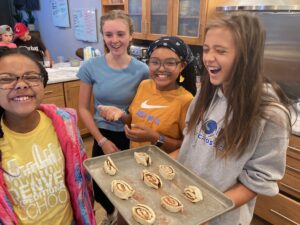Like Fish to Water: Virtual Learners in 2012

I have worked as an online educator since 2005 – facilitating learning in a two-year online program that equips current educators with Master’s degrees in Educational Leadership and signifies their formal readiness to take on positions of leadership inside their schools or districts. Getting to know these professionals through weekly interactions over the course of two years allows me to maintain an important connection to “real” schools and the students they serve as I fulfill other professional roles as an education policy researcher and consultant.
Meeting 21st century student expectations
When I started in the online program all those years ago, digital learning still operated on the margins. The students in my first cohort viewed their participation in an online program as somewhat of an experiment and stepped into the virtual waters cautiously. Things couldn’t be more different for my current students, who jumped in with both feet and took to online learning like fish to water. It is often those of us inside institutions and organizations that still see online learning as something new or revolutionary. To today’s college students, the marriage of technology and education is not a “bonus feature.” Using technology to facilitate learning is expected, and we must rise up to meet these expectations.
Developing social learning networks
In the first few years, I had to spend a lot of time getting my students used to the virtual environment. It took great attention and care to set expectations for how we would interact with one another by email and in online discussion forums. When my first cohort started, Mark Zuckerburg was piloting a high school version of Facebook as the ‘next logical step’ beyond his Harvard-based version. My students had never “tweeted,” “pinned,” nor “tagged” a thing. Today, connecting through technology is a no-brainer. To 2012 learners, their peers and instructors in the virtual environment are just another social network – with academic content at the core of the interactions.
Preparing educational leaders for the future of education
It is more than our pedagogy as online educators that must shift to meet the changing needs of virtual learners in 2012 and beyond. The program where I act as a facilitator trains teachers to become educational leaders, including administrative licensure in most cases. While colleges of education must meet accreditation standards, I have found that students expect content and curriculum that go beyond those declared necessary by accrediting organizations like NCATE. This reveals an important disconnect between what colleges of education provide and what future leaders of K-12 schools need. In many cases, our future administrators are being prepared to lead school models that no longer exist. It is a complex problem with interwoven layers, and I see only one actionable solution. Individual instructors must cultivate new pedagogical approaches and relevant content inside their own classrooms while they wait for the larger “ship” to turn. This is as simple as allowing students to share “TED Talks” as examples of compelling narrative with one another instead of requiring only peer-reviewed journals on the reference page. It means allowing students to move through learning at their own pace, rather than rigid lock-step syllabi. In other words, it means training future leaders in the same way they will be expected to lead in the schools of the future – allowing for personalization, customization and adaptability of instruction.
Re-designing with students in mind
As colleges of education take up the work of re-designing their programs to meet the changing needs of tomorrow’s educational leaders (and teachers), it is critical to keep the students at the center of course and program design. Programs and courses must be flexible, extensible, and allow for easy adaptation of content and pedagogy if they are to be successful in preparing leaders that will thrive in new models of education. While our current K-12 and Higher Education silos limit the potential for deep, sustainable improvements to education on a systematic level, individual instructors have the power to open up the doors to the future of education by recognizing what our current students bring to the table. Virtual learners in 2012 bring proficiency with technology, a desire to connect in online settings and the recognition of new models of learning to serve their own professional and personal needs. An acknowledgement of these characteristics and strengths will set any institution that is approaching re-design on the right course.
Originally posted by Carri Schneider as a guest author for Getting Smart.



Carla Belyea
I hope that is idea takes on a clearer actionable plan: Education " means allowing students to move through learning at their own pace, rather than rigid lock-step syllabi."